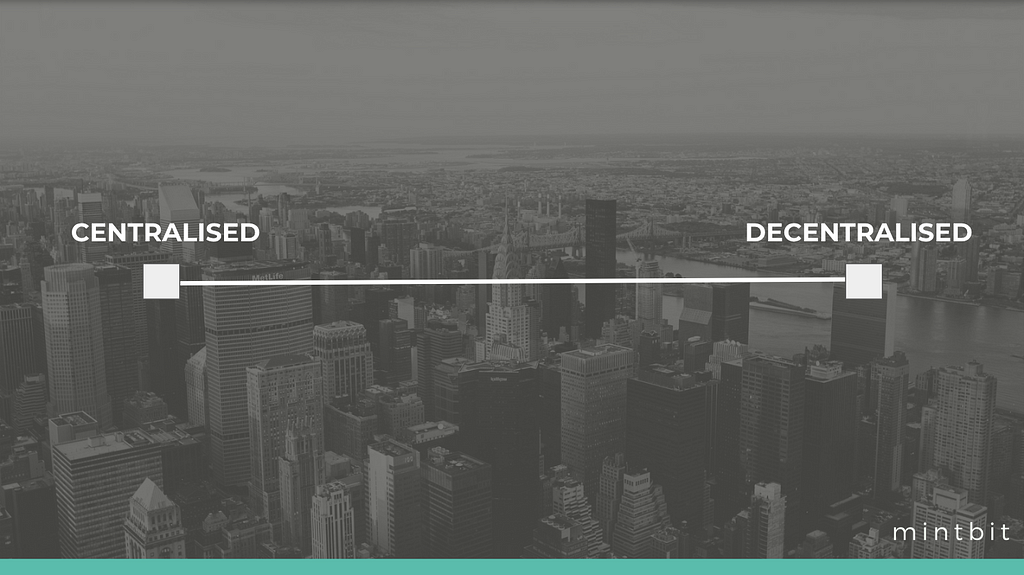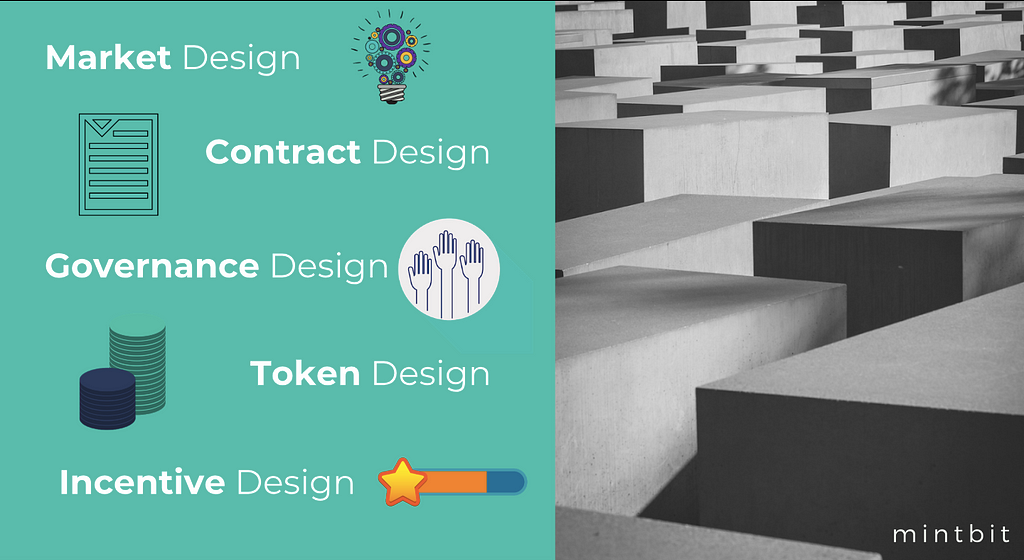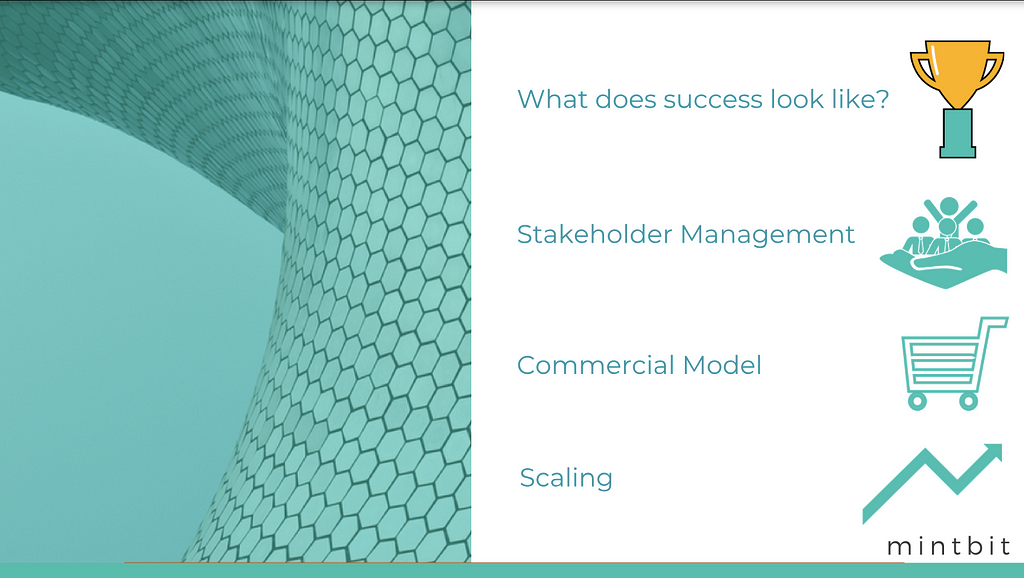Latest news about Bitcoin and all cryptocurrencies. Your daily crypto news habit.
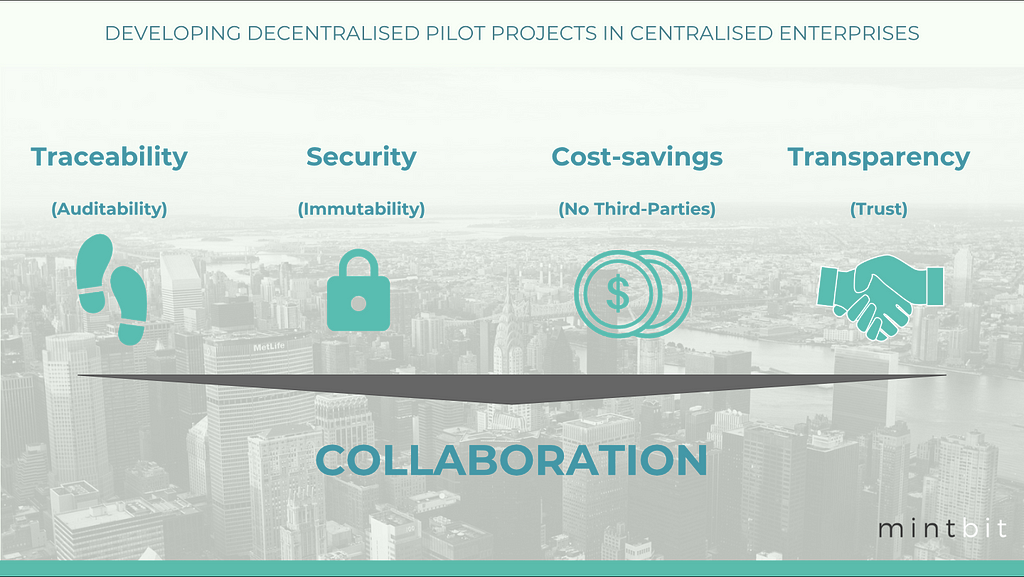
Collaboration
Blockchain is a distributed, decentralised, immutable ledger. In plain terms, it is a record of transactions, structured in such a way it redefines how we think about collaboration.
Traceability
Immediately supply chains come to mind. DeBeers implemented a brilliant pilot tracking diamonds from source to retail. In an industry such as the diamond trade, one vulnerable for conflict and corruption, traceability has value.
Security
When you watch a movie and you see an underaged hoodie-wearing hacker typing furiously for one minute on their computer, hacking into the mainframe changing the passcode combinations, rest assured that cannot happen on the blockchain. Once information is recorded via a consensus mechanism, that information can only be changed by issuing a correction, stored in a separate block. In other words, you see the train of transactions. This is makes it a lot easier to trust the information in front of you.
Cost-savings
Cost-savings are less shiny than new revenue streams, but don’t underestimate just how much cost-savings distributed ledger technologies could realise. If we appreciate the complexity of a typical Fortune 500 company, and consider all checks and balances to ensure that transactions and actions are actually taking place, internally and by third parties, that amounts to a small fortune. Blockchain technologies could automate and standardise a fair chunk of that. That’s just within companies. Now appreciate all the checks and balances for cooperation between companies. If that amount of money doesn’t convince you to put an intern on blockchain I don’t know what will.
Trust
The key premise of this technology is that it absorbs part of the risk of trust. It is a tool that makes it easier to trust not only known, but also unknown parties, opening up completely new value creating opportunities.
Let’s apply these principles to a company we all know well: Uber.
The Centralisation-Decentralisation Spectrum
To start off, centralisation vs. decentralisation is not a binary equation but a spectrum. There are nuances across this spectrum.
Uber has a set of characteristics which make it perfect for our purposes. It is …
- a centralised …
- marketplace …
- heavy on algorithms.
To make this model work, you, the passenger, needs to trust that when you book an Uber that …
- the driver shows up …
- you are safe during the ride …
- you arrive at the time and place previously communicated to you.
The driver trusts that …
- you are not a psychopath and …
- the transaction takes place against the specified terms.
In centralised businesses there are many mechanisms to build trust (standardisation, product guarantee, reputation). In exchange for safeguarding this trust, and optimising the match, Uber takes a cut of the transaction. In a nutshell, that’s the value Uber creates.
Semi-Decentralised Models
Blockchain aims to do remove uncertainty of transactions. There are several ways of doing this.
IDENTIFICATION
Business identity is already protected (patent, IP, design) so why aren’t individual identities? Blockchain could be used to verify aspects of somebody’s identity, or even entire identities. If we imagine a more decentralised Uber, blockchain-based identification would not be a stretch. It would be possible to not only identify people, but also the wider IoT ecosystem, such as vehicles. This could help Uber remain relevant when autonomous vehicles arrive.
SMART CONTRACTS
Another way of moving towards decentralisation is shifting the responsibility from central databases to smart contracts. Smart contracts are executable conditions. If this happens, than that happens. As of now, smart contracts are not a replacement for actual contracts, and in that sense they are poorly named, but they could be very useful indeed. They could easily replace the billing component in our first example.
If we consider such as model, we see clear benefits of decentralisation and even new ways of value creation, but we also observe value is still captured centrally. What if value would be captured in a decentralised manner?
Decentralised Models
Our solution is …
- protocol based …
- open-sourced …
- and publicly available for people to contribute to and use.
By building on this protocol, you can mix and match components of Uber’s infrastructure, i.e. billing component, matching component, etc.
Two-sided platforms need to provide a safe place to transact for both sellers and buyers. Guaranteeing payment, smart contracts reduce uncertainty for seller side of the market. The risk on the buyer side is two fold: 1) delivering goods and 2) safeguarding quality. A way to reduce that risk is attaching criteria to seller identity, building and filtering reputation. This can all be done in a decentralised manner.
Now imagine something goes wrong. Dispute resolution should be centralised surely? Well in theory even dispute resolution can be decentralised. Third party moderators chosen in open markets can issue refunds.
In the end of the day, when Perceived Expected Benefit > Perceived Expected Cost, a transaction is likely to take place. Value can be captured in the platform, of which everybody being a stakeholder in that platform is benefiting.
The key question is: How much is dependent on the platform, and how much on the buyers and sellers themselves? Should the solution be decentralised in the first place?
Blockchain Design
We know blockchain is a tool. We also know this tool can be used to change value creation itself, and hence has the potential to change business models. So what are the criteria for Blockchain Design?
- Who are the actors in our market? In other words, we need to verify actor identities for blockchain technology to become useful. How do we know we can trust another? How can we quantify reputation?
- How do we design for network effects? How do we make sure the market will function, and which safeguards are in plays to prevent market failure?
- Decentralised systems have two natural vulnerabilities. 1) How do you kick-start a decentralised system without a central stimulus and decision making entity? 2) What happens when the music stops? Where does the responsibility fall when the market, for whatever reasons, needs interference to survive?
Contract Design
- Whenever value is transacted, the terms of those transaction need to be accepted by both parties. Now what happens if those terms are rejected? Law firms built entire industries solving this question. What does conflict resolution look like?
- How do you communicate and enforce terms? How do you change terms?
Governance
- If you’ve ever built a business, or even led a project, you are intimately acquainted with the value of managing unexpected events. How are decisions being made? Who can make decisions? What can they make decisions about? How does this responsibility evolve over time? Who can read information, and who can write information?
- I think Governance is closely linked to M&A. If you sell the business, what are you selling? Decision-making capabilities? IP? Information access? All these permissions are locked up in the governance layer.
Token Design
- Introducing a token in your blockchain solution captures a completely new store of value, and goes hand in hand with a mountain of considerations. Think: exchange rates, token supply, accepted means of exchange, token design, monetary policy, inflation, miners, regulation, etc.
Incentive Design
- Tokens are the most popular way of incentive design at the moment. I like to call it blockchain nudge economics. But, as any game developer knows, there are many ways to incentive behaviour. Step number one is to define what value adding behaviour looks like, which is easier said than done.
- Without incentive design, your decentralised market place will not function, and eventually break down. The reason for this is simple. Reducing opt-in friction also reduces opt-out friction.
Pilot Design
We’ve familiarised ourselves with blockchain benefits and their expressions. We’ve understood the five blockchain solution design principles. Yet, why do so many blockchain pilots still fail?
There is a lot of innovation theatre going on. CEOs that walk into meetings stating “We need to do something with blockchain, go find me a problem”. Naturally pilots born out of this approach tend to have low solution commitment.
If value is created in different ways, it needs to be measured in different ways. How do we quantify the value of improved collaboration internally, within our ecosystem, or with our customers?
Stakeholder Management
Let’s say the pilot meets the criteria for 1) generating value and has 2) visibility on being cash-flow positive, but there is a potential conflict with an existing project or division.
If you’re reimagining your supply chain this has a lot of implications. If the organisation has low solution commitment that pilot will probably die within internal politics. This is not rocket science, but we’ve seen it happen many times.
Commercial Model
Frequently it doesn’t even get to this point because most pilots have no solid commercial model. The focus tends to be on R&D, and then falls into a black hole when a solid business case needs to be presented internally to obtain sign-off for future funding. An integrated vision is key. If you don’t know how the blockchain could directly contribute to your vision, don’t do it.
Scaling
This all comes together in scaling. If the solution is developed externally, how to continue development for the next phase? Blockchain developers that want to work for venture builders or development houses do not necessarily want to work for Fortune 500 companies. They also come with a hefty price tag. Which department will adopt the project? Is there knowledge in the department to lead such a project? Who is going to sign off on funding?
Looking Ahead
Designing a blockchain solution and completing a successful pilot is a non-trivial task. If we do it well, it can definitely be worth it.
Testing these business models is not done in three months. There are technical and commercial hurdles. However, the potential upside is enormous. Entire markets will be turned on their heads. It is worth our time to think a little longer, a little deeper, and to do this properly.
Let us know what you’re working on in the comments!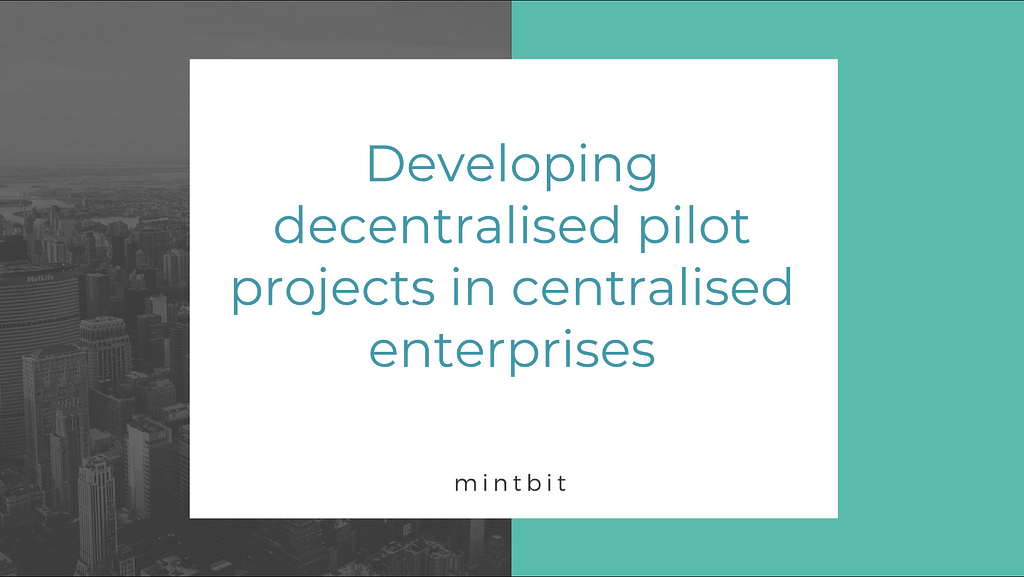
About MintBit
MintBit was founded in London in 2018 to help companies and policy makers navigate decentralised technologies on a global scale. Providing advisory services, we support organisations on their journey of understanding, prioritising, and executing on the strategic potential of blockchain. A well-founded understanding of the technology and the market empowers companies to identify the opportunities that will deliver long-term business results.
Arwen Smit (@arwensmit) is CEO at MintBit (www.mintbit.io). Follow us for the blockchain insights on Twitter at @mintbit_ and LinkedIn.
This is a transcript of the keynote Developing Decentralised Pilot Projects in Centralised Enterprises, first presented at Blockchain Solutions World at the IoT Solutions World Conference 2018 in Barcelona.
Developing Decentralised Pilot Projects in Centralised Enterprises was originally published in Hacker Noon on Medium, where people are continuing the conversation by highlighting and responding to this story.
Disclaimer
The views and opinions expressed in this article are solely those of the authors and do not reflect the views of Bitcoin Insider. Every investment and trading move involves risk - this is especially true for cryptocurrencies given their volatility. We strongly advise our readers to conduct their own research when making a decision.
